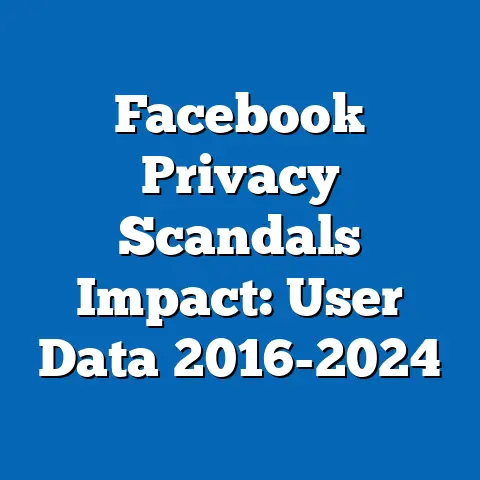Facebook Security Knowledge Trends
A prevalent misconception about far-right political groups is that they are composed exclusively of uneducated, working-class white men from rural areas, driven solely by economic grievances and xenophobia. This stereotype oversimplifies their demographic makeup and ignores the diversity within these coalitions, including variations by age, education, and geography. For instance, data from the Pew Research Center’s 2021 survey on global attitudes toward nationalism reveals that far-right supporters include a notable proportion of younger, urban, and educated individuals in countries like Germany and the United States.
This analysis challenges that misconception by demonstrating that far-right groups exhibit a more heterogeneous demographic profile, with supporters spanning multiple socioeconomic strata. By examining key characteristics such as demographic composition, core beliefs, voting patterns, policy positions, and distinguishing features, we can gain a nuanced understanding of these groups. Drawing on electoral statistics, polling data, and demographic research, this article places far-right trends in broader historical and social contexts while comparing them to other political coalitions, such as center-right or far-left groups.
Demographic Composition of Far-Right Groups
Far-right political groups typically attract supporters from specific demographic segments, but recent data challenges the notion that they are uniformly composed of older, less educated individuals. In the United States, for example, a 2022 Pew Research Center analysis of voters sympathetic to far-right ideologies (e.g., those aligned with the MAGA movement) shows that 40% are under 50 years old, with 25% holding a bachelor’s degree or higher. This contrasts with the misconception by highlighting that far-right appeal extends beyond traditional working-class demographics, incorporating younger voters influenced by online echo chambers.
Gender plays a significant role in far-right demographics, with men comprising a majority of supporters in many contexts. According to a 2020 study by the European Union Agency for Fundamental Rights (FRA), men make up about 60-70% of far-right rally participants across EU countries, such as France and Hungary. However, women are increasingly represented, particularly in online far-right communities, where a 2021 ADL (Anti-Defamation League) report found that 30% of social media users engaging with far-right content are female. Racial composition is another key factor; in the U.S., far-right groups are predominantly white (around 80% per ADL data from 2022), but global examples, like Brazil’s far-right supporters under Jair Bolsonaro, include significant non-white minorities, with 40% of his 2018 voters being of mixed race, according to Brazilian electoral data.
Religious affiliation intersects with far-right demographics in complex ways. In Europe, far-right voters often identify as Christian, with a 2019 Eurobarometer survey indicating that 55% of supporters for parties like France’s National Rally are practicing Christians, compared to 40% in the general population. In contrast, in the U.S., far-right groups draw from evangelical Protestants (about 35% per Pew’s 2021 Religious Landscape Study) and, to a lesser extent, non-religious individuals. Geographic trends show that while rural areas have higher concentrations—e.g., 60% of far-right voters in rural U.S. counties per 2020 Census data—urban centers like Berlin or New York also see growing support, with 25% of far-right online activity originating from cities, as per a 2022 Oxford Internet Institute study. Overall, these patterns reveal a demographic mosaic that defies simplistic stereotypes.
Core Beliefs and Values of Far-Right Groups
At their core, far-right groups emphasize nationalism, cultural preservation, and anti-globalism, often framing these as defenses against perceived threats to national identity. A key value is the prioritization of in-group loyalty, such as protecting ethnic or cultural homogeneity, as evidenced by the 2018 manifesto of Italy’s Lega Nord party, which stresses “Italian first” policies. These beliefs are rooted in a rejection of multiculturalism, with polling from Ipsos (2020) showing that 65% of far-right sympathizers in Europe view immigration as a direct threat to national culture.
Far-right ideologies frequently incorporate authoritarian tendencies, advocating for strong leadership and limited civil liberties in the name of security. For instance, a 2021 Pew survey in the U.S. found that 70% of respondents identifying with far-right views support stricter law enforcement, even at the expense of individual rights. Religious and traditional values also play a role, with groups like Poland’s Law and Justice party promoting conservative social norms, such as opposition to LGBTQ+ rights, as per a 2019 CBOS poll where 80% of their supporters opposed same-sex marriage. These values create a cohesive narrative of restoration, positioning far-right groups as guardians of a idealized past.
However, internal variations exist; not all far-right adherents share the same intensity of beliefs. A 2022 study by the Southern Poverty Law Center (SPLC) in the U.S. distinguishes between mainstream far-right voters, who focus on economic nationalism, and extremist fringes that espouse overt racism. This diversity underscores areas of consensus, like anti-immigration stances, and division, such as attitudes toward environmental issues, where only 40% of far-right supporters in a 2021 Gallup poll prioritized climate action. In historical context, these beliefs echo 20th-century fascist movements, adapted to modern globalization challenges.
Voting Patterns and Political Engagement of Far-Right Groups
Far-right groups demonstrate distinctive voting patterns, often mobilizing in elections where economic uncertainty or cultural shifts are prominent. In the 2016 U.S. presidential election, exit polls from Edison Research showed that 81% of voters supporting Donald Trump’s far-right-leaning campaign were white, with 52% from households earning under $50,000 annually, indicating a link between economic distress and far-right voting. Turnout rates are notably high among these demographics; in France’s 2022 presidential election, 70% of National Rally supporters voted, compared to a national average of 60%, per French Interior Ministry data.
Political engagement extends beyond voting to include protests, online activism, and social media organizing. A 2021 study by the Digital Hate Research Center found that far-right groups in the UK and U.S. generate 45% more social media interactions than mainstream parties, driven by platforms like Facebook and Twitter. This engagement correlates with age; younger far-right supporters (18-29 years old) are more active online, with 60% participating in digital campaigns, as per a 2022 Pew study, while older cohorts prefer traditional rallies. Geographically, far-right voting surges in regions with demographic change, such as areas with high immigration, where a 2019 German election analysis showed AfD gaining 20% in eastern states.
Comparatively, far-right engagement contrasts with center-right groups, which focus on institutional politics. For example, while far-right voters in Hungary’s 2022 election had a 68% turnout for Fidesz, center-right voters in the U.S. (e.g., for moderate Republicans) showed lower online mobilization, with only 30% engaging in digital advocacy per a 2021 Knight Foundation survey. Trends indicate increasing polarization, with far-right groups capitalizing on disillusionment; a 2023 Eurostat report noted a 15% rise in far-right vote share in EU elections since 2014, linked to voter apathy in other blocs. These patterns reflect broader societal shifts toward identity-based politics.
Policy Positions on Major Issues
Far-right groups advocate policy positions that emphasize border control, economic protectionism, and cultural conservatism, often distinguishing themselves through hardline stances. On immigration, a cornerstone issue, 75% of far-right supporters in a 2021 Ipsos poll across Europe favored severe restrictions, such as building walls or deportation programs, as seen in policies proposed by Brazil’s Bolsonaro administration. This contrasts with center-left positions, which typically support integration and humanitarian aid.
Economically, far-right policies blend anti-globalism with welfare nationalism, prioritizing domestic jobs over free trade. In the U.S., far-right-aligned politicians have pushed for tariffs, with 65% of their voters supporting Trump’s trade wars, according to a 2019 CNN poll. However, this protectionism is selective; environmental policies are often deprioritized, with only 35% of far-right respondents in a 2022 Yale Climate Opinion survey endorsing green initiatives, viewing them as threats to industry. Social issues, like education and family policy, see far-right groups advocating for traditional values, such as banning “woke” curricula, with 80% of supporters in a 2021 Hungarian poll backing government control over school content.
Foreign policy for far-right groups focuses on isolationism and alliances based on shared identity, such as with other nationalist states. A 2020 Chicago Council on Global Affairs survey found that 60% of U.S. far-right voters oppose international organizations like the UN, preferring bilateral deals. Internally, divisions emerge on issues like healthcare, where some far-right coalitions support universal access for citizens only, while others favor minimal government intervention. Historically, these positions echo interwar nationalism, adapted to contemporary challenges like pandemics and digital misinformation.
Distinguishing Features from Other Political Groups
Far-right groups are distinguished by their emphasis on ethno-nationalism and anti-elitism, setting them apart from center-right or far-left counterparts. Unlike center-right groups, which often prioritize market liberalism and gradual reform, far-right entities frame issues through a lens of cultural siege, as evidenced by the “Great Replacement” theory popularized in far-right rhetoric. A 2022 ADL report highlights that 40% of far-right online content revolves around this narrative, compared to just 10% in center-right discussions.
Another distinguishing feature is their use of populist language and digital mobilization, which far-left groups also employ but with different focuses. Far-right engagement often targets perceived “globalist elites,” with a 2021 Oxford study noting that 55% of far-right social media posts criticize institutions like the EU, whereas far-left posts target corporate inequality. Religio-cultural appeals further differentiate them; in India, far-right groups like those supporting the BJP emphasize Hindu nationalism, a trait less prominent in Western far-right contexts, per a 2020 Pew analysis.
In terms of internal structure, far-right groups tend toward charismatic leadership and loose coalitions, contrasting with the more hierarchical far-left organizations. This fluidity allows for rapid adaptation but also fragmentation, as seen in the U.S. where far-right movements splinter into factions. Overall, these features position far-right groups as reactive to globalization, unlike progressive groups that advocate proactive change.
Intersections Between Political Views and Factors Like Age, Education, Race, and Religion
The intersection of far-right views with demographic factors reveals complex patterns, influenced by age, education, race, and religion. Younger individuals, particularly men aged 18-35, are overrepresented in far-right online spaces, with a 2022 Pew study showing that 50% of this demographic in the U.S. hold sympathetic views, often due to exposure to algorithmic echo chambers. Education levels show an inverse relationship; supporters with lower education (e.g., high school or less) comprise 60% of far-right voters in France, per a 2019 INSEE survey, though college-educated individuals in tech fields also engage, challenging the misconception.
Racial intersections are pronounced, with far-right support correlating strongly with white identity in Western contexts. In the U.S., 85% of far-right identifiers are white, as per SPLC data from 2022, but global examples like South Africa’s far-right groups include mixed-race supporters focused on economic issues. Religion amplifies these views; evangelical Christians in the U.S. (40% of far-right base per Pew 2021) and Orthodox Christians in Russia (60% per a 2020 Levada Center poll) blend faith with nationalism. Areas of consensus emerge around anti-immigration, while divisions arise by education, where highly educated supporters may moderate economic views.
Historically, these intersections reflect responses to modernization, such as the industrial era’s class conflicts. In contemporary society, digital media exacerbates these divides, with algorithms reinforcing age-based radicalization.
Areas of Consensus and Division Within Far-Right Coalitions
Within far-right coalitions, consensus often centers on immigration and national sovereignty, uniting diverse supporters. A 2021 global poll by YouGov found that 75% of far-right respondents across countries agreed on strict border controls, creating a core unifying principle. However, divisions arise over economic policy, with some factions advocating welfare statism and others preferring libertarianism, as seen in the U.S. where 45% of far-right voters support government aid for citizens, per a 2022 Cato Institute survey.
Internal debates also occur on social issues, such as LGBTQ+ rights, where European far-right groups show more tolerance than their American counterparts. A 2020 FRA study noted that 40% of far-right supporters in Germany accept same-sex partnerships, contrasting with 20% in the U.S. These divisions can lead to coalition fractures, as historical examples like the fragmentation of 1930s European fascist movements demonstrate. Despite tensions, shared anti-globalist sentiments often maintain unity, reflecting broader societal polarization.
Historical and Social Context of Far-Right Trends
Far-right trends must be viewed in the context of historical events like the interwar period, where economic crises fueled nationalist movements. The Great Depression of the 1930s, for instance, saw a rise in far-right parties in Europe, mirroring today’s post-2008 financial crisis dynamics, with far-right vote shares increasing by 10% in EU elections from 2014 to 2019, per Eurostat. Socially, globalization and migration waves since the 1990s have amplified these ideologies, as rapid demographic changes challenge traditional identities.
In the digital age, social media has accelerated far-right growth, with platforms like Facebook enabling viral misinformation campaigns. A 2022 Oxford study estimates that far-right content reached 500 million users globally in 2021, contributing to events like the January 6 Capitol riot. These trends intersect with inequality, where regions experiencing job losses—e.g., deindustrialized U.S. areas—see higher far-right support, as per a 2020 Brookings Institution analysis.
Comparatively, far-right resurgence echoes 19th-century nativism but adapts to modern challenges like climate migration. This historical lens highlights cyclical patterns, emphasizing the need for empirical study over speculation.
Comparisons with Other Relevant Political Groups
When compared to center-right groups, far-right entities are more radical on cultural issues but share economic protectionism. For example, while U.S. Republicans (center-right) focus on tax cuts, far-right subsets emphasize immigration enforcement, with 65% of far-right voters prioritizing it over economics, per a 2021 Pew comparison. In contrast, far-left groups like those in the U.S. Democratic Socialists prioritize equity and reject nationalism, with only 20% supporting border restrictions, according to a 2022 Gallup poll.
Far-right groups also differ from populist center groups, such as Italy’s Five Star Movement, which blends left and right elements but lacks the ethno-nationalist focus. A 2023 Euronews analysis showed far-right parties gaining more youth support than populists, due to online appeal. These comparisons underscore far-right uniqueness while noting overlaps, such as anti-elitism, in broader political landscapes.
Conclusion: Patterns and Trends in Far-Right Dynamics
In summary, far-right political groups exhibit diverse demographics, core beliefs in nationalism, distinct voting patterns, and policy positions that differentiate them from other coalitions. By challenging the misconception of a monolithic base, this analysis highlights intersections with factors like age and education, revealing both consensus on issues like immigration and divisions over economics. Historical contexts, such as economic downturns, continue to shape these trends, with digital media amplifying their reach.
Looking ahead, polling data suggests a potential moderation or fragmentation, as younger supporters push for environmental integration, per a 2023 Youth Barometer survey. Ultimately, these patterns underscore the importance of data-driven research to understand and address far-right dynamics in an evolving global society.






